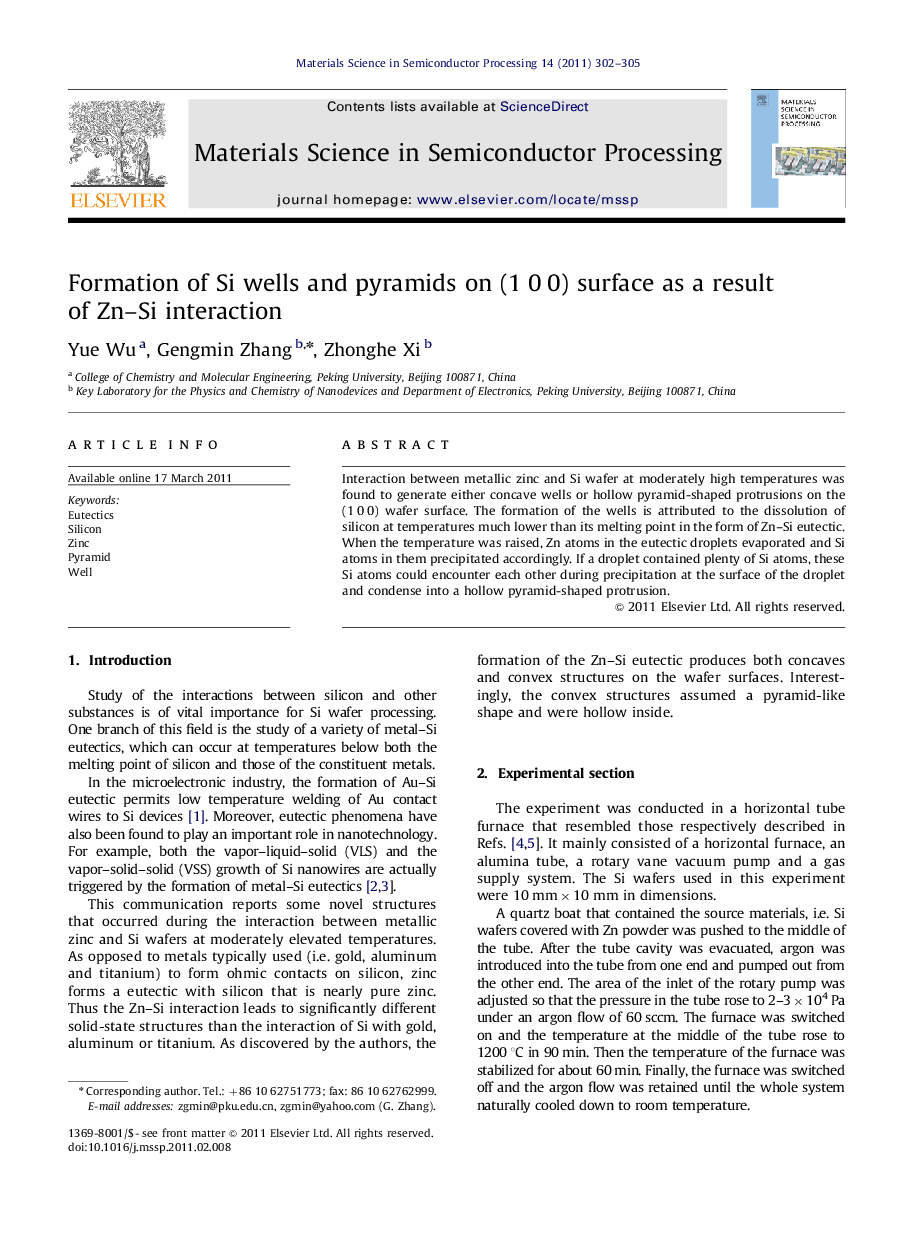| Article ID | Journal | Published Year | Pages | File Type |
|---|---|---|---|---|
| 726983 | Materials Science in Semiconductor Processing | 2011 | 4 Pages |
Abstract
Interaction between metallic zinc and Si wafer at moderately high temperatures was found to generate either concave wells or hollow pyramid-shaped protrusions on the (1Â 0Â 0) wafer surface. The formation of the wells is attributed to the dissolution of silicon at temperatures much lower than its melting point in the form of Zn-Si eutectic. When the temperature was raised, Zn atoms in the eutectic droplets evaporated and Si atoms in them precipitated accordingly. If a droplet contained plenty of Si atoms, these Si atoms could encounter each other during precipitation at the surface of the droplet and condense into a hollow pyramid-shaped protrusion.
Related Topics
Physical Sciences and Engineering
Engineering
Electrical and Electronic Engineering
Authors
Yue Wu, Gengmin Zhang, Zhonghe Xi,
